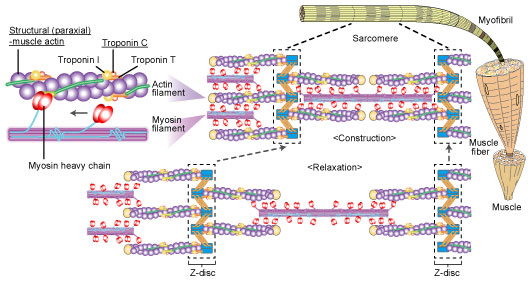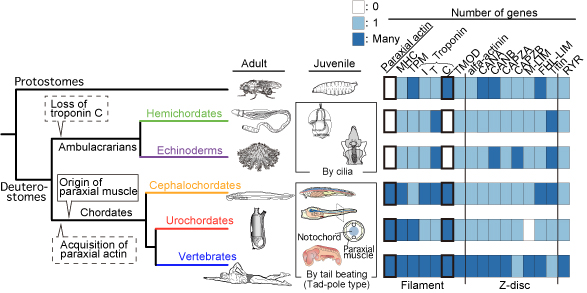Origin of skeletal muscle |
 |
| Fig. 1 Muscle structure and sliding theory |
found that more than twice as many orthologs of paraxial muscle genes are present in chordates, as in nonchordate deuterostomes (ambulacrarians). Orthologs of paraxial-type actin and troponin C genes are absent in ambulacrarians and most paraxial muscle protein isoforms diversified via gene duplications that occurred in each chordate lineage. Analyses
of genes with known expression sites indicated that some isoforms were reutilized in specific muscles of nonvertebrate chordates via gene duplications.
 |
| Fig. 2 Presence or absence of muscle gene orthologsD |
As orthologs of most paraxial muscle genes were present in ambulacrarians, in addition to expression patterns of related genes and functions of the two protein isoforms, regulatory mechanisms of muscle genes should also be considered in future studies of the origin of paraxial muscle.
Deuterostome genomics: Lineage-specifi c protein expansions that enabled chordate muscle evolution. Molecular Biology and Evolution,35:914-924. Web.
 |
|